Request a Catalog
The Little Korean Girl and The Apple
The Little Korean Girl and The Apple
By: Howard E Frasier
 I took three photos late April 1953, which developed into quite a story. I was with Dog Company 5th Regiment, 1st Marine Division. While we boarded old Japanese built rail cars coupled up to a steam engine, I named the old ?Honey bucket Express? while we were boarding the rail cars old Korean men worked up and down the tracks, oiling all of the moving parts of the engine. Then opening the packing lids on the rail car wheels, and adding oil, letting them close with a loud clang. A tank filled to provide water for the boilers and the coal hopper was shoved full. When that was over one of them swung a signal lantern and we left on a 4 to 6 hour 55-mile ride to the port of Inchon Korea. Where a convoy of ships laid waiting to take us on a MarLEX = Marine Landing EXersizes. She never attained a top speed of over 40-m.p.h. Shortly after we were underway, we ate rations for chow, previously loaded by the service battalion, along with fruit, and treated potable water in five-gallon cans used to refilled canteens. The railcars had rows of wooden seats back to back, bolted down to a bare wooden floor on either side of a center isle there were no toilets, or running water, so we made a number of stops along the way for head calls^, military traffic animal crossings, and other trains. As we traveled through the countryside, Korean people working out in rice fields carried wooden yokes on their shoulders with two buckets hung either side using a gourd dipper, dipping from ?honey buckets?, and pouring it down the rows, it was human excrement.
I took three photos late April 1953, which developed into quite a story. I was with Dog Company 5th Regiment, 1st Marine Division. While we boarded old Japanese built rail cars coupled up to a steam engine, I named the old ?Honey bucket Express? while we were boarding the rail cars old Korean men worked up and down the tracks, oiling all of the moving parts of the engine. Then opening the packing lids on the rail car wheels, and adding oil, letting them close with a loud clang. A tank filled to provide water for the boilers and the coal hopper was shoved full. When that was over one of them swung a signal lantern and we left on a 4 to 6 hour 55-mile ride to the port of Inchon Korea. Where a convoy of ships laid waiting to take us on a MarLEX = Marine Landing EXersizes. She never attained a top speed of over 40-m.p.h. Shortly after we were underway, we ate rations for chow, previously loaded by the service battalion, along with fruit, and treated potable water in five-gallon cans used to refilled canteens. The railcars had rows of wooden seats back to back, bolted down to a bare wooden floor on either side of a center isle there were no toilets, or running water, so we made a number of stops along the way for head calls^, military traffic animal crossings, and other trains. As we traveled through the countryside, Korean people working out in rice fields carried wooden yokes on their shoulders with two buckets hung either side using a gourd dipper, dipping from ?honey buckets?, and pouring it down the rows, it was human excrement.
 The Korean people living in the villages we passed through were aware of the troop moving operations, and many of them of all ages were waiting along the tracks for the trains. Not only ours, but troop trains from many other nations there fighting the war^, whenever we were slowing to a stop, it was always very interesting. Great swarms of them ran along the tracks on both sides of the rail cars. They yelled and waved ?hey Joe,? and done any thing they could think of to get our attention, some of them even blew whistles, what a show! It had this 22-year-old Nebraska Bumpkin very fascinated with them. Photo #1 shows a group of Korean children during one of our stops that were trying to get an apple from a Marine named John Ferguson, S# 1336480.
The Korean people living in the villages we passed through were aware of the troop moving operations, and many of them of all ages were waiting along the tracks for the trains. Not only ours, but troop trains from many other nations there fighting the war^, whenever we were slowing to a stop, it was always very interesting. Great swarms of them ran along the tracks on both sides of the rail cars. They yelled and waved ?hey Joe,? and done any thing they could think of to get our attention, some of them even blew whistles, what a show! It had this 22-year-old Nebraska Bumpkin very fascinated with them. Photo #1 shows a group of Korean children during one of our stops that were trying to get an apple from a Marine named John Ferguson, S# 1336480.
However, he wanted to give it to the shy little Joson^, the Boyson in the brown coat figured it out. He was trying to explain it to the Boyson^ in the white coat, there was a lot of chatter & noise, but I think he could hear him. The apple in John?s hand is visible, in photo #2, he was determined to give it to the little Joson, but he had to move down into the doorway of the rail car, the little girl knew he was trying to hand the apple to her, but the older Boy behind her was reaching across her shoulder. Then the boy in the blue and white cap got involved he was looking at the boy in the white coat talking to him. Fergie was talking to them in our Pidgin English; not able to speak their language, so that was an interesting problem.
 In the last photo #3 I took, John is out of the rail car, down on the tracks, He gave the apple to the Skochi Joson^ i.e. little girl, obviously that made him happy! Many other Marines onboard had been watching and photographing the activity from the rail cars and after that was over, they showered the kids with many items from our C rations in short order. Fruit previously issued to us at chow time. A lot of it was handed or thrown out to the Koreans, especially the children, the rations had candy, gum, matches, cigarettes, powdered chocolate, coffee, creamer, water purification tablets P38 can openers? sturno heat tabs and a variety of canned food, dated from 1939 to 1945 stenciled on the lids.
In the last photo #3 I took, John is out of the rail car, down on the tracks, He gave the apple to the Skochi Joson^ i.e. little girl, obviously that made him happy! Many other Marines onboard had been watching and photographing the activity from the rail cars and after that was over, they showered the kids with many items from our C rations in short order. Fruit previously issued to us at chow time. A lot of it was handed or thrown out to the Koreans, especially the children, the rations had candy, gum, matches, cigarettes, powdered chocolate, coffee, creamer, water purification tablets P38 can openers? sturno heat tabs and a variety of canned food, dated from 1939 to 1945 stenciled on the lids.
I wonder how many of the parents of these children [Mamason and Papason^] were watching us, I know that many of the children were orphans, due to the death and destruction caused by the war that had gone on since 1950, and many of them had to fend for them selves, I will always wonder what that little Boyson in the charcoal coat was thinking while he was looking up at me as I clicked the shutter on my camera, there is no way to describe the sights, sounds & smells.
I need to call your attention to their clothing, it appeared to me that some of their coats were made from army blankets, some of the girls wore traditional high waisted dresses, and their shoes were made of rubber, I seldom seen them wearing stockings. Check out the expression on the little boys face The older people had whisky, beer ECT, to sell and items made from 105,155 and 90 MM brass shell casings, I purchased two brass spoons we called ediwa spoons, made from the shell casings. I am not certain how the Koreans got the casings, the military allowed no civilians north of the Imjin river that ran roughly parallel to the Jamestown MLR^
There was a standing order to pick up the brass and send it to Inchon, to be shipped back to Con US, However, I remember when the tanks sat on the Jamestown line, and fired from the revetments dug into our trenches by the dozer tanks, I saw the spent brass casings drop on the tank and bounce to the ground as they pushed them out of the pistol ports. Since there was no space provided in the tank for storing them, they left them there. I did not witness that often though, when we got word that there was a firing mission we were allowed to clear the aria to avoid the resulting enemy return fire.
As you can see, Fergie, Serial # 1336480, looks pretty squared away, he came to Korea onboard a ship with about 3000 Marines in the 32nd monthly draft early April, Upon arrival we boarded ships and sailed 26 miles southwest to the Tokchok Islands and be involved in a MarLEX = Marine Landing EXersizes.
Page notes
I arrived in Inchon Korea 1 September 1952 with the 24th draft onboard the USNS General A.W.Brewster. Moreover, I joined D/2/5 about 15 September at Camp Rose] John Ferguson joined our Company [D/2/5] at Camp Pheng Wha shortly after we were ordered of line, (My fifth time on line) He replaced one of the 1,015 casualties the 1st Marine Division suffered defending the trio of Outposts, Vegas Reno And Carson, called the Nevada Cities on the Jamestown MLR in late March.
When we returned from the MarLEX, and went back onboard a ship named the Talladega that carried Higgins boats we rode ashore making the landing o the island of Tokchok-to we sailed 26 miles back to Inchon, we went back in rail cars, I was on a train I called T he Old Honey Bucket Express. I was looking forward to the next encounter with the Korean people as we returned to Camp Pheng Wha in the Kimpo Peninsula, I wasn?t disappointed, Korean people were just as interesting to me.
I have written other reflections, and in a diary my wife Parthene?s parents gave to me, I carried during the year I spent in Korea, hereafter designated Ref D for diary and Ref Refl for reflections.
We were ordered from Camp Pheng Wha to Camp Casey, and after more dry land training we went on another MarLEX in May, and boarded the USS Lafayette County, that time we went ashore in am tracks. Much better!
When we returned to Camp Casey I had 21 letters from my wife Parthene waiting for me at mail call.
One of them had photos and information that brought me up to date about the progress of our daughter born 21 Feb 1953 while I was on a truck with the 5th Marines returning to combat on the Jamestown line hill 119; our Outpost was Vegas, hill 21
Following that we were ordered to the Wyoming and Kansas Lines, these were secondary trench lines we could fall back to if the CCF = Chinese Communist Forces over ran the Jamestown MLR we worked on then making improvements. Then we had parades, athletic competition, and a giant beer bust. Ref Refl
We returned to combat on Hill 229 and Outpost Kate July 4 1953. That was my fifth and last time on line.
I wrote a poem, and sent to the leatherneck magazine that was published in the Jan 07 issue I named four Marines in the poem I wrote. I need to write about these fine Men and let anyone interested know what an honor it was having served with them.
Mike Mudurian, a BAR man, 19 years old, wounded twice, lives in Akron Ohio, he volunteered to join us the night of October 22nd 1952 on a combat patrol; we wound up being trapped in the CCF trenches on enemy held hill 144, and we had to fight our way out, I was very afraid ! If Mike, Carvel Legursky, my assistant BAR man Mike Sagon, and two good officers had not been with us I do not think we would have made it, Mike waited and counted head?s as we ran down a Hill past him, he seen that our Corpsman Doc Jones from Oklahoma had left his stretcher behind in the Chinese trenches, and knew our Platoon leader Lt. Howard Hardart [living in Eugene Oregon] was missing, he went back and found him limping with a sprained ankle, and helped and helped a very grateful officer back to the MLR Ref D-Ref Refl
[I have a magazine with an article published in it about Mike Mudurian with a story he told about Korea in the Akron Life and Leisure magazine dated Jan 05] The old Honey bucket express = we made several trips from various tent camps A convoy of 6×6 Cargo trucks^ came on a MSR. We loaded on the trucks and were delivered to a Rail station, and transferred to the rail cars Head is old navy terminology used in sailing ships restroom facilities are heads
Skochi Joson, is Pidgin English for little Girl and boy son=boy mama son & Papa son well you figure it out
19 other nations were involved on the conflict
MLR^AKA the Main Line of Resistance close to the 38th parallel,
Perhaps someone is wondering why I called the train we rode on the ?Honey Bucket Express? well here it is;
As we traveled along the rail lines, or on a road in trucks. Anywhere on the south side of the Imjin River in the spring, we could see the Koreans working in their rice paddies pouring liquid from buckets along the rows. we knew it was human excrement that was gathered from various sources, and for that reason we were warned not to eat their food; it would result in a case of dysentery. One day when I was back at Division, in need a head call, I was directed to an elevated platform with a squad tent on it, there were rows of 55 gallon barrels cut in half sitting along the perimeter of the platform. When I climbed a short flight of stairs, and entered the tent, I was quite impressed with all of the fine architecture, engineering, and artisanship put forth to turn out such a fine structure. There were long benches the height of a chair along the walls with many round holes cut in it on about three foot centers, and sanded to prevent damage to bare skin, with rolls of toilet paper hung in convenient locations, one roll provided for every two seats. My Oh My how nice they were!
The old outdoor two seated privies with a bang board and the Wards catalog on the floor my parents grew up with, and I dealt with until about 1945 in Scottsbluff Nebraska, wouldn?t hold a candle to that unit there in Korea, back then in Nebraska it was great fun to tip them over during Halloween. I have a feeling the Army left that structure was there when they traded places with the Marines [they went to the east coast, and the Marine?s came to the west coast in March 1952 during Operation Mixmaster.] When I was outside again I seen two old Korean men, they had a wagon we called a honey cart and a small Mongolian horse that pulled it. The cart was loaded with containers; some of them were empty 55 gallon half barrels they were exchanging for those under the tent floor while they were light enough to handle. They delivered the collection to a hole dug at the end of a rice paddy and dumped it in; enough water was stirred in to make slurry. The Korean workers carried a wooden yoke on their shoulders, with two buckets that hung on each side they filled with the slurry; they walked out in the paddy?s pouring it down along the rows with a dipper. [When we were on line north of the Imjin River on a combat patrol, we had to be careful not to fall into them in the dark. I was never that unfortunate. However, some of my comrades were.]
Carvel Legurski, [diseased] was my bunker Mate We returned to combat on the Jamestown MLR 10 October 1952 on hills 101&181 Outposts Corrine& Dagmar. I went back off line to s supply point and mess tent behind a hill in a protected aria that supposedly could not be observed by the Chinese north of us. I was standing in a chow line to get a hot meal; I handed my mess gear to the Marine in front of me and asked him to hold my place, I had to make a head call; I crossed a MSR. = Maim Supply Road, and climbed a hill to sandbagged enclosure, I was sitting in it and heard a noise on my right or east of me, and watched a tank appear as it came rumbling around a hill belching smoke, some one screwed up! Tanks had orders to stay clear of supply points close to the MLR, it came on up the MSR, and swung in ripping deep ruts in the dirt and stopped close to the chow line, the twin engines shut down. Moreover, the top hatch opened. a Marine appeared, a conversation began just as an enemy artillery round screamed in It hit and exploded west of me, I was very excited and afraid as I was running down the hill trying to pull up my pants when the second round hit somewhere. The third and last round hit the chow line I was running toward,. That stopped me cold as I seen body?s fly. Carvel Legursky, [wounded ounce that I know of] suddenly appeared, and was working with the wounded Marines. I buttoned my pants fastened my belt, and just stood there watching, there were three killed and twelve or fifteen wounded. I had to scrounge up mess gear since I lost mine at the chow line. They shut down the mess tent and supply point. Later on back at the bunker, Carvel said, they thought I was a Corpsman, they were handing me bandages and calling me Doc. I had a conversation with Mike Mudurian. He said there was an enemy FO tracked down and killed. Ref D Ref Refl
Sgt Al Kalinowski was my squad leader, I have such hi regard for him I would have tried to do anything he asked of me, he tripped a mine, and lost his legs, above the knees, and had damage to his right hand and arm Mid July, 1953. He survived all of that and he is living in New York. Ref Refl.
I used D/2/5 Marine HE Moore?s name to make the poem I wrote rhyme. He married a Japanese girl while on R&R in Kyoto Japan, but it was annulled be hour Commanding officer, Captain Clark Judge
I was standing in a trench and watched the Rockets when they were fired north at 2200 the 27th of July. I returned to Con US in august 1953 on board the USNS General Walker, We brought 450 repatriated prisoners with us. When I left the ship in SanFrancisco and found my devoted wife Parthene. She handed me a beautiful little 7 ? month old baby and said to her, that is your daddy. I still have the spoons, and the Argus C3 camera I used to take the photos, an ashtray made from a 155-armillary casing I got from the Army.
I sent over 300 photos home during the year I was there beginning September 1952, [my 22nd birthday] We raised six fine daughters, at last count there were twelve grandchildren, the great grandchildren keep popping up like mushrooms.
Over fifty years later I met Bob Garcia living here in Portland, he gave me a photo of his older brother Leon and said he died in Korea. I was there and witnessed it. His brother is listed Leon Anthony Garcia, killed 04 Nov 1952 in the National Archives and Records Div. Ref DRef Refl
There is an article and a photo of the 24th draft along a rail line sent by Bob Piel. They published It in the sound off section of the November 03 issue of the Leatherneck when draft 24 arrived in Korea. 1 September 1952. I was there among the 3000 Marines in the photo waiting with their sea bags and 782-Gear, and an M1 rifle. It was my birthday. I was 22 years old. I Responded to that and wrote an article to the Leatherneck that was published in the March issue 04
Today is Jan 21 I just called and wished my daughter Happy Birthday, she is 54 years old
I, Howard E Frasier S # 1264373, served with Dog Company 2nd Battalion, 5th Marine Regiment 1st Marine Division in Korea, beginning 1 September 1952 to July 1953
The Korean people knew where all of the stops were. and during one of the many stops which were always very interesting, as the train slowed to a stoop hordes of Korean people were running along the tracks yelling Hey Joe blowing whistles and doing anything they could think of to attract attention


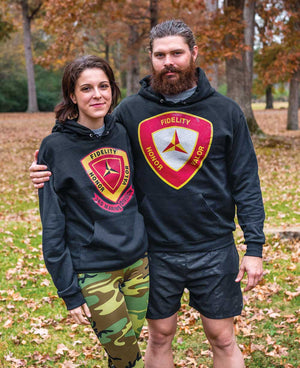
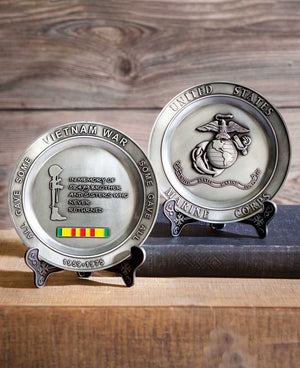
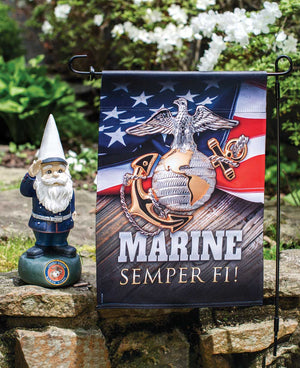
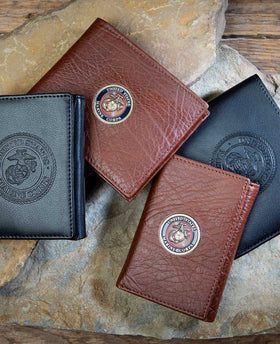
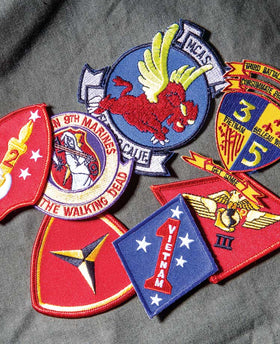
Leave a comment